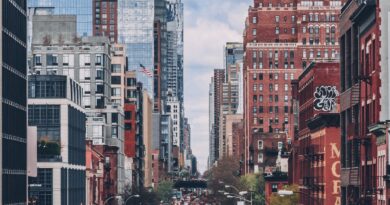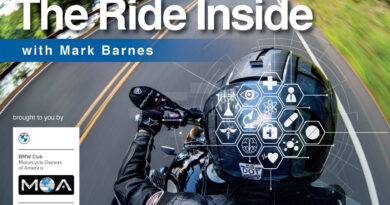Habit-forming
Consider this a complimentary piece to last month’s “Sensitivity Training” article. That one dealt with the process of sensitization, which makes us more aware of elements possessing special relevance within our perceptual field. Here we’ll examine habituation, which does the opposite: it makes us less aware of repeatedly encountered stimuli lacking significant consequences, thereby conserving our limited resource of consciousness in favor of novel or personally meaningful features in the world around us or within our bodies.
 Although habituation diverges in some ways from how we commonly think about “habits,” there is overlap. Behavioral habits can be thought of as automated routines occurring without much thought or deliberate effort. They may be as simple as brushing our teeth or much more complex, such as following a circuitous route on a daily commute or coordinating a sequence of clutch, brake, throttle, and steering inputs while entering a corner at speed. Consider how often you’ve performed such tasks with your conscious attention pointed somewhere else, then realized you have barely any memory of, say, driving to work.
Although habituation diverges in some ways from how we commonly think about “habits,” there is overlap. Behavioral habits can be thought of as automated routines occurring without much thought or deliberate effort. They may be as simple as brushing our teeth or much more complex, such as following a circuitous route on a daily commute or coordinating a sequence of clutch, brake, throttle, and steering inputs while entering a corner at speed. Consider how often you’ve performed such tasks with your conscious attention pointed somewhere else, then realized you have barely any memory of, say, driving to work.
In perceptual terms, routinely experienced sensory data that has proven low-priority – either because it doesn’t matter to us or it has been fully addressed by well-established behavioral habits – gets filtered out of conscious awareness so we can attend to (ostensibly) more important stuff. If we were fully aware of the non-stop avalanche of incoming sensory data to which our central nervous systems are subjected, we’d be continually overwhelmed by the cacophony and sheer number of streams to track. Indeed, some psychological maladies are characterized by exactly such a lack of automatic filtering and prioritizing.
I used this next example in “Sensitivity Training,” but it bears repeating. Until I call it to your attention later in this sentence, you are unaware of the pressure at your butt-chair interface, unless some discomfort prompts you to adjust your position, and even that may transpire outside your awareness. Such sensory information is always available, but awareness of it doesn’t do anything for you; you’re not protected from danger, no personal goals are furthered, nor is any gratification derived from monitoring it. Instead, your mind has been focused on this text, which seems more likely to serve you. You can observe the same phenomenon when you wear a new ring or watch. As long as it involves unfamiliar sensations your brain is still evaluating, it draws your attention. Once it’s deemed inconsequential, awareness fades. Note this does not happen just because you intellectually know the sensations are inconsequential; your neurons need proof over time. Our senses also constantly recalibrate based on what’s been most common recently. We can know 80 degrees will feel cool in August, but 80 still feels hot in March.

All this is helpful and adaptive – until it’s not. Obviously, relieving our minds of unnecessary burdens and freeing us to concentrate on what matters most is a functional asset, but what about when danger slips in camouflaged in the drab garb of familiarity? An easy example might be a white car poised to pull out in front of us with a white building behind it. We’ve arrived at this intersection every workday for years, so we’re accustomed to a large blob of white over there. Now it doesn’t even register and a potentially lethal threat hides in plain sight. How about a warning light we’ve ignored for a while, or an odd noise or vibration we put off investigating? Eventually these lose their power to draw our attention and just become unremarkable – and unnoticed – features of our perceptual field. Our sensory apparatus can’t assess their relevance accurately based on as-yet-unexperienced consequences, and if we’ve deliberately downplayed risks (e.g., reassuring ourselves a warning light is “probably nothing”), there’s no longer any emotional alarm based on a conceptual appreciation of potential consequences. In the absence of immediate impingement or emotionally charged apprehension, our sensorium increasingly determines the stimuli to be low-relevance and directs our attention elsewhere.
A similar principle in the behavioral realm is how practice makes permanent, rather than perfect. We all develop riding (and other) habits based on simple repetition, regardless of how problematic they might be – habits which may hinder our performance indefinitely because they become invisible to us, and therefore impossible to change. For better or worse, we get used to things and lose track of them. Hence, we benefit from consultation on our skills throughout the time we use them; riders with decades of experience may be blind to a reflexive malpractice their riding school instructor or observant buddy would find glaringly apparent. Similarly, two people can be exposed to the same perceptual field and (unwittingly) select very different subsets of data to notice, based on how routinely those components have appeared in their respective histories. Of course, one subset is probably more advantageous than the other in terms of risk or opportunity assessment. Repetition alone doesn’t guarantee the most critically important features will take the spotlight.
One benefit of habituation is how it helps us ignore unpleasant sensations, like chronic pain. While pain usually has high survival value as a warning about physical problems requiring attention, it can persist even after we’ve done all we can do. In this scenario, it adds nothing actionable and only subtracts from our quality of life. Ideally in such cases, our awareness of the pain gradually subsides. It might be easy to find again if we go hunting for it, but it gets relegated to the background while we focus on other inputs, instead of perpetually eclipsing everything else.
On the other hand, habituation can also dull pleasure. Ever notice how the first beer after a period of abstinence tastes extra delicious? Habituation reduces our sensitivity to those same flavors when they’re commonplace. More relevant to motorcyclists, how about the first ride after a harsh winter or string of obligations has kept us out of the saddle? All sorts of luscious sensory details arrive at the doors of perception unfiltered, creating a sublime phase of reentry. Once-routine sensations return to the realm of novelty-driven salience. We savor such moments as long as we can, knowing those details will gradually recede to merely peripheral status.

The topic of habituation came to mind upon receiving my first COVID-19 vaccination shot yesterday. I’ve had an easier time than many who’ve dealt with more extensive restrictions necessitated by the pandemic. I have a day job which transfers adequately to an online medium and motorcycling already involves considerable social distancing and deterrence of viral transmission, what with helmet-wearing and plenty of air between rolling riders. Nevertheless, after my jab, I was surprised by a surge of excitement about many motorcycle-related activities I’d been missing, such as club meetings, garage gatherings, restaurant rendezvous, rallies, and simply riding without concern about what might not be open or safe to enter. For the first year in decades, my 2020 was devoid of any real travel, motorcycling or otherwise. I’d become inured to a collection of initially distressing deprivations. For this reprieve, I’m thankful to habituation. Now, by the same token, I’m facing prospects of heightened enjoyment as these things start to repopulate my schedule. Again, I have habituation to thank as an indirect contributor. I hadn’t realized how much I’d adapted to my suppressed level of activity, so simply resuming my old mobility feels like a windfall.
Just as with sensitization, we typically have little conscious control over habituation, although we can purposefully use it to our advantage in certain ways. For example, one method of treating anxiety utilizes gradually increasing exposure to anxiety-provoking stimuli, coupled with learning to manage the associated cognitive and physiological alarm signals. Following repeated innocuous encounters, people can experience reduced sensitivity/reactivity to the previously disruptive stimuli. (This is not the only effective means of addressing anxiety, nor is it the ideal option for some people, but it does illustrate the deliberate use of habituation to solve a problem.)
We can do likewise in mastering intimidating challenges on our bikes or in our garages. If panic braking freaks us out, we can practice in a deserted parking lot where the risks are low, ideally with a skilled friend who can supply useful feedback and reassurance. Stopping in incrementally shorter distances, experiencing the weight transfer and flirting with the limit of front tire traction – all while avoiding catastrophic consequences – teaches our central nervous system not only desirable skills, but also to be less counterproductively fearful of the associated sensations. We get used to them and they’re transformed into familiar information instead of startling cause for alarm. Ultimately, some of this translates into reflexive muscle memory – a form of behavioral habit. The same process can be employed in systematically taking up incrementally more complicated mechanical projects, repeatedly proving to ourselves that terrible consequences don’t occur (technically a related process called extinction which reduces the motivation derived from either rewards or punishments) and allowing increased familiarity to reduce the salience of stimuli that had previously provoked anxiety. For instance, wiring diagrams might become neutral tools instead of panic-inducing monstrosities.
It’s no mystery cultivating good habits, behaviorally speaking, enhances our safety, proficiency, and enjoyment of motorcycling, not only while riding, but also when carrying out mechanical tasks. Habitual perception, however, can blunt our awareness of truly important things, good and bad. Reclaiming said awareness by thoughtfully focusing attention on what we know really matters (sensitization training) counters a thoughtlessly automatic process with a strategically designed one, and selectively desensitizing ourselves with habituation can expand our range of options. No one reading this essay will be surprised to find out we all get used to what’s familiar, but this mundane principle has a multitude of applications unrealized until we take the time to think about it.

Photos by Mateusz Dach, Wes Fleming and Artem Beliaikin.




Pain…. various ways in which pain can lose its salience in your consciousness, thank goodness.
But “habituation” to the sensation is not one of them, again thank goodness. All kinds of visual and sound stimulation can recede into the wallpaper and become the norm. Clearly, that would be no darn good if the sensation of pain did the same.
Here’s my tip from the world of psychology. When I throw my leg over the saddle and get ready to crank the engine (1999 R1100S), I ask myself, “Is there anything going on in my little life just now that might lead me to a bad scoot?” Bad mood, keen to see woman friend, anxious about something….?